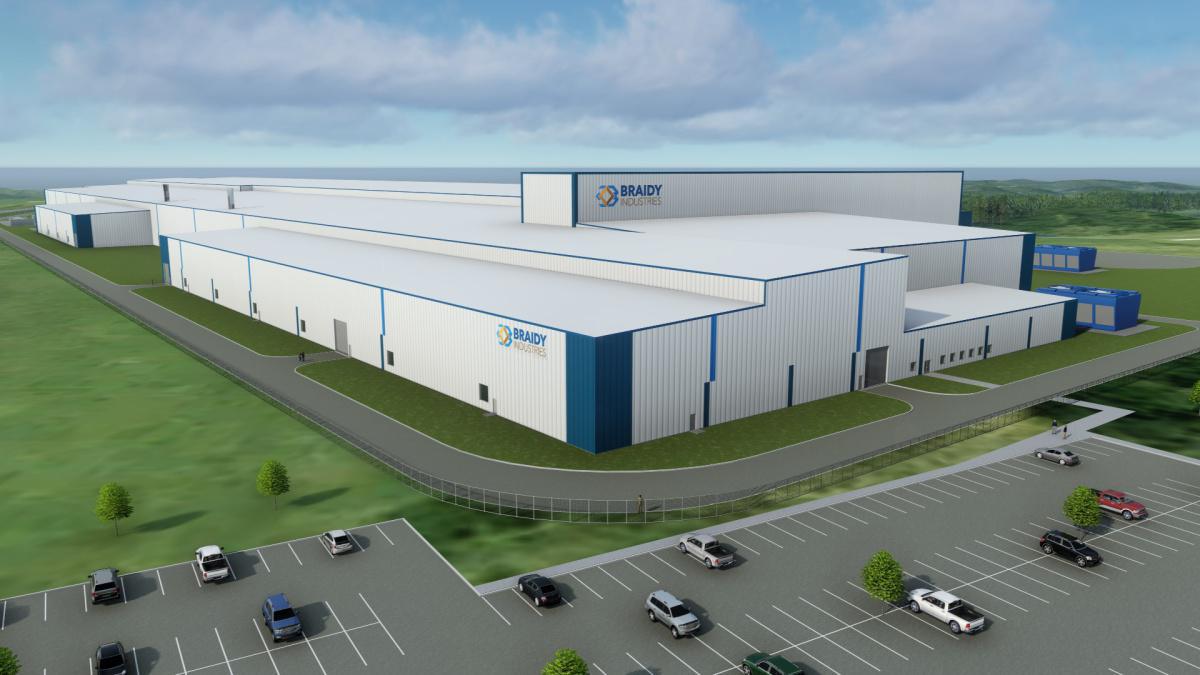A central component of Braidy Industries’ vision is to maximize its economic impact, but minimize its environmental impact, both locally and globally. On a national and international scale, Braidy is pioneering a generational and industry-wide shift in the production of low-carbon, high-value and low-cost aluminum sheet. Its $1.7B rolling mill will be the first greenfield aluminum manufacturing facility built in the U.S. in 37 years, and, upon completion, will be the 13th largest building in the world. Greenfield construction allows for near-zero maintenance and environmental remediation costs, and higher production efficiency for all products. The Braidy Atlas mill is the first mill with a design optimized for automotive-grade production and the company expects to realize industry-leading efficiency in man hours per ton. As the “greenest” aluminum rolling mill in the United States, it is the only aluminum rolling mill to achieve a “low emissions” air permit from
the EPA.
Braidy differentiates itself from its peers not only by setting a global standard for environmentally responsible manufacturing, but also by the unmatched scale of its local and regional impact. Today, many companies pursue headquarter groundbreakings, expansions or relocations in urban hubs where they can leverage existing talent and infrastructure, while also benefiting from existing vibrant economies of scale. Braidy chose a different, ambitious path of revitalizing an economy from the ground up by designing and investing in programs that will stimulate self-sustained economic prosperity for generations. The company is using specialized, benchmarked educational programs to empower youth and skilled laborers, and simultaneously address widespread drug abuse in the community. Braidy is also designing corporate campus and housing communities that support the wellbeing of working families. Investments like these have catalyzed unprecedented state-wide impact.
Earlier this month, Dr. James V. Koch, Board of Visitors Professor of Economics, President Emeritus at Old Dominion University and author of over 50 economic impact studies, published a report that stated Braidy Industries will generate an estimated $1.5 billion in Eastern Kentucky and $2.8 billion in the Commonwealth through 2021. The introduction of a company the size and scale of Braidy Industries will automatically have a sustained impact to the local economy. What makes Braidy’s impact first of its kind is that it’s powered by a vision to change the lives of the people of Ashland and the adjacent counties, by building an economy anchored by
Braidy Atlas.
This change will be immediate and sustained, as Braidy will create 1,500 construction jobs, 650 new permanent, advanced manufacturing jobs and approximately 3,600 additional jobs in the surrounding communities, according to the report. In order to stimulate the economy and propel Eastern Kentucky to compete on a national scale, Braidy must combine value with opportunity. In 2021, the report shows that the average income for a Braidy employee will be $52,574, over $6,000 more than the estimated state average by 2021. Braidy makes decisions with a keen awareness of national demand that has made highly specialized talent
a commodity.
The report utilized a modeling tool called the RIMS-II economic impact model to assess the effect of Braidy’s economic actions in the short and long term. The model demonstrated direct, indirect and induced impacts to properly evaluate the scope of impact Braidy will generate. From purchases made by Braidy for supplies and services, to money spent by Braidy’s employees and suppliers, the Braidy economy will generate waves that ripple far beyond Ashland. Beyond jobs offered by Braidy itself, Braidy’s economic activity will generate approximately 12,000 additional job years in Eastern Kentucky and 31,000 incremental job years in the Commonwealth. While the report estimates impact through 2021, it is clear that Braidy’s impact will be sustained for years beyond activity produced in its inaugural production year and felt miles beyond
Ashland, Kentucky.
Spotlight: Braidy Industries Enivonmental and Economic Impacts
Sponsored Content
Comments
No comment
Be the first to post a comment

